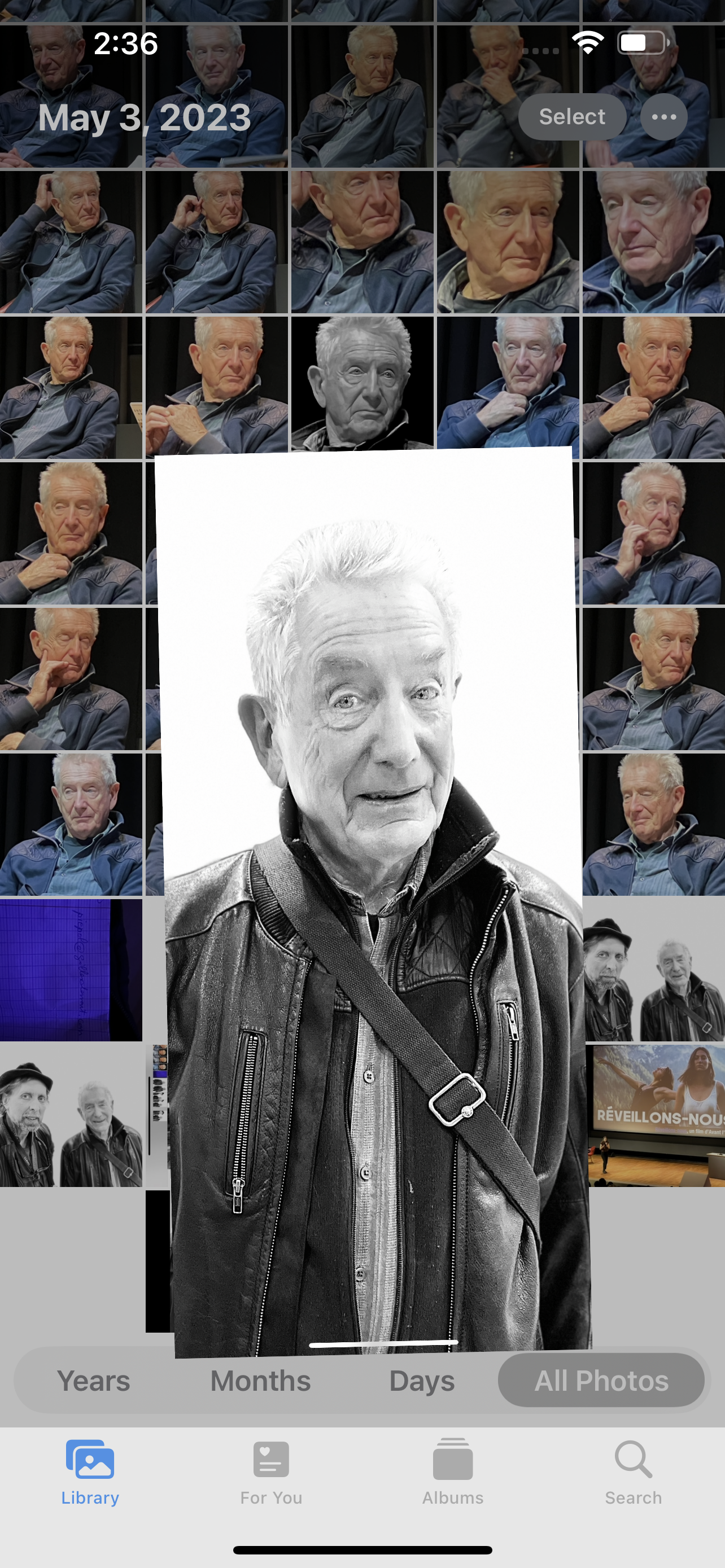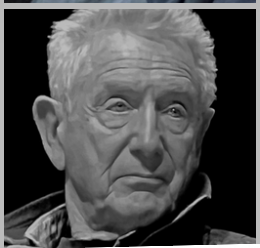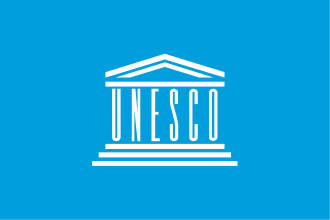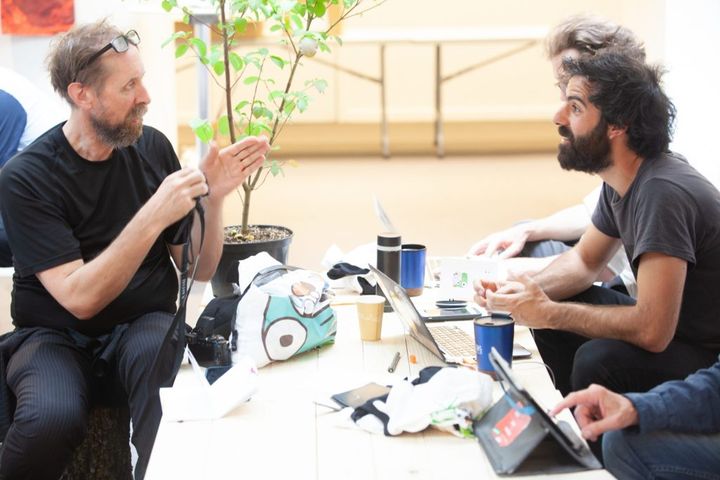Thoughts about Creative Commons CC-BY-NC-SA (EN)
Article about terms and conditions around storytelling incorporating photography as creative process including projection (not to say "publication") in the storytelling process.

Robert Baldrige has been trotting the earth from a Quaker Center in an abandoned volcano in South America to the home to the Dali Lama for a half-century. At first, Robert's main medium was post cards. As I understand it, should you find yourself on the list, you would receive many postcards. Today, in the land of Instagram and WhatsApp, Robert is still the adolescent storyteller, and we all may be his parents. What did you learn at school today? What friends did you make? Hang in there, fellow Robert-parents, we are in for the ride of our lives!
So the discussion today is about more than putting the proverbial fingerpainting on the fridge. The problem is that these are good fingerprintings, well photography, not only in their own rights, but in the story that they implicitly tell. This is the point where any article about Robert usually starts the name-dropping, in perfect imitation of Robert himself, so I will name-drop too: Robert Baldridge. It's time that on drop that name: Robert Baldridge. It is sufficient.
But what's the point ?
The goal of my process with Robert this morning is to figure out what to do with the fingerpaintings of great persons around great stories, be they published on the fridge or in, let's say Vanity Times (if such a thing exists). It was tough getting into the subject because young Robert does the fingerpainting and sees the fingerpainting when in the kitchen or in Vanity Times (speaking metaphorically).
What should you do when you meet this storyteller? Robert takes pictures. So, what? You may ask yourself what Robert would do with these photos, or you may ask what you could do with these photos.
Should you have a Robert Baldrige photo, there are two non-negotiables.
- The most basic thing to do is to attribute the work to (c) Robert Baldrige with preferably a link to the @RobertBaldrigeOfficial Instagram account.
- The second basic thing is to allow Robert to see the use of his work, to inform him of it. Robert also avails himself to the creative process around the publication of his work, but is amenable to publishers.
That doesn't mean you are in the clear. The two above conditions apply invariably to any use. Normal compensation considerations are applicable, and can be in cash, by check (in dollars) or by wire transfer.

In the case above, Robert took photos of Gilles Clément, an environmental public figure, and had proposed to meet Gilles to learn more of his work. Robert was at an event with me. Gilles was initially the story-teller, but Robert began resonating Gilles story with a photographic story from Robert. (Robert sometimes calls himself a "storyteller".)
During the event, Robert showed me the black-and-white-on-black-background portrait (the small one) of the above montage (done from his iPhone by the way). I wondered, what is to become of this portrait. I prefer the original, but I can only crop the copy I have from the above montage below.

However, tonight isn't the point. The point is about an orchestra on a glacier in Norway some time ago. Robert was hired for a photo shoot of a protest orchestra somewhere in Scandinavia, I think Norway, where a whole orchestra went atop a glacier. My imagination in memory has a photo where Robert may have take a photo of the event from a hydro-carbon monstrosity known as a helicopter.
[Note to self, ask Robert for the Glacier Orchestra photo to put here.]
One of the speakers at the Thanks for Nothing Colloque on Arts et Engagement 2023, Camille Etienne, would dance in the artic in her web production Pourquoi on se bat. That speaker reminded me of Robert's shoot. The cliché isn't on Google, shoot. I didn't think it would be. Robert is sensitive because, and this is understandable, the viewing of Robert's work starts in the moment the shutter stutters. The musicians knew this, but where are they?
[Maybe find the photo of the chamber-orchestra outside projected at the Louvre here]
All this brings us to "the point" of this article, how is a photographic artist to adapt to today's immaterial world. Art used to be material. Photos, even two-dimensional, used to be objects. There used to be edges. Now, everything is edgy. My goal here is to curate for the wellbeing of the world, but I fear that photograph of the orchestra on the glacier for a healthy and harmonious planet, mother Earth, is as endangered as the glacier itself, or at least the photographer and the musicians de par our own mortalities. The question is useful posterity for collective prosperity, not just Robert's.
In order to achieve some possibility at posterity, I need the works. Most of them are on a hard drive, somewhere. Now, I've been a photographer too, and a geek, the computer kind of geek (and other kinds of geek too, but that is for another story). At Les Grands Voisins, we have launched a social computer room "Creative Digital" as part of our digital activities (also called ResDigita). One reason for this is to provide digital locker rooms for the computerless or the computer-vulnerable. Thus we have the talent to be custodians.
In Robert's case, we are talking about work that might be bigger than Robert, and I also would like for our artistic activities (also called Les Arts Voisins) to be able to curate something worthwhile both for Robert and for the world. This brings me to the heart of why I am writing this article, an article that is becoming a little longer than article I usually write.
How do you value "a Baldridge?"
Robert may come to an agreement with you about how you may use his work. The base rules are detailed above: attribute the work to Robert, preferably with a link to the RobertBaldridgeOfficial Instagram account, and involve Robert in the publication process. But that doesn't help much, or might not be precise enough. Let's take this one step further.
Engage an email exchange with Robert via RobertBaldridge at hotmail.com (I really got to help Robert use a domain name that Robert controls) asking for permission, preferable with some kind of compensation, preferably money, but it could be troc. If you agree to the troc, most likely, and by default, Robert will grant you an CC-BY-NC-SA license after you have agreed to the two terms above (I repeat):
- Attribution (c) Robert Baldridge (integrated in the BY part of the CC-BY-NC-SA)
- Initial publication with Robert's involvement on some level resulting in Robert's traditional "that's fine"
You should also compensate Robert somehow: cash, check or wiretransfer in monetary terms for the time being ; or maybe some kind of barter. Other, preferably non-exclusive commercial uses are also available. I guess, if Robert grants CC-BY-NC-SA (with compensation and involvement in initial publication), one could credit with "(c) Robert Baldridge 2023 CC-BY-NC-SA".
This legal framework for setting edges around Robert's body of work is my proposition. I think Robert can use it. There is one sticking point in the CC-BY-NC-SA license that Robert told me he wants to use. I am not sure that Robert understands fully that after the first license is accorded, all further uses distributed by the initial licensee only need the CC-BY-NC-SA conditions. Therefor, maybe it would be better that Robert be credited without necessarily mentioning the CC-BY-NC-SA in the credit explicitly... I think there may be a creative digital-geek thing that is simpler than you would imagine here. I have an idea! For now, the "(c) Robert Baldridge 2023" accreditation with an implicit, non-publicized CC-BY-NC-SA is probably the better way to go about Robert's past work. Of course, if anyone asks, CC-BY-NC-SA grants the licensee the distribution rights by the same terms even though the initial licensee probably had to agree to extra conditions to obtain the initial CC-BY-NC-SA (consideration / compensation, collaboration / creative process even though Robert is Easy ;) ).
Robert's work is experiential. It is also performance art. Robert is a visible photographer, exact as visible as any blind person. His art is himself at the taking of the picture. His art is in the discussion the picture with you. His art is in many different relationships. It is a beautiful art with blurred edges.
As far as preparation for publication is concerned, Robert won't give you a hard time.
Enjoy.


